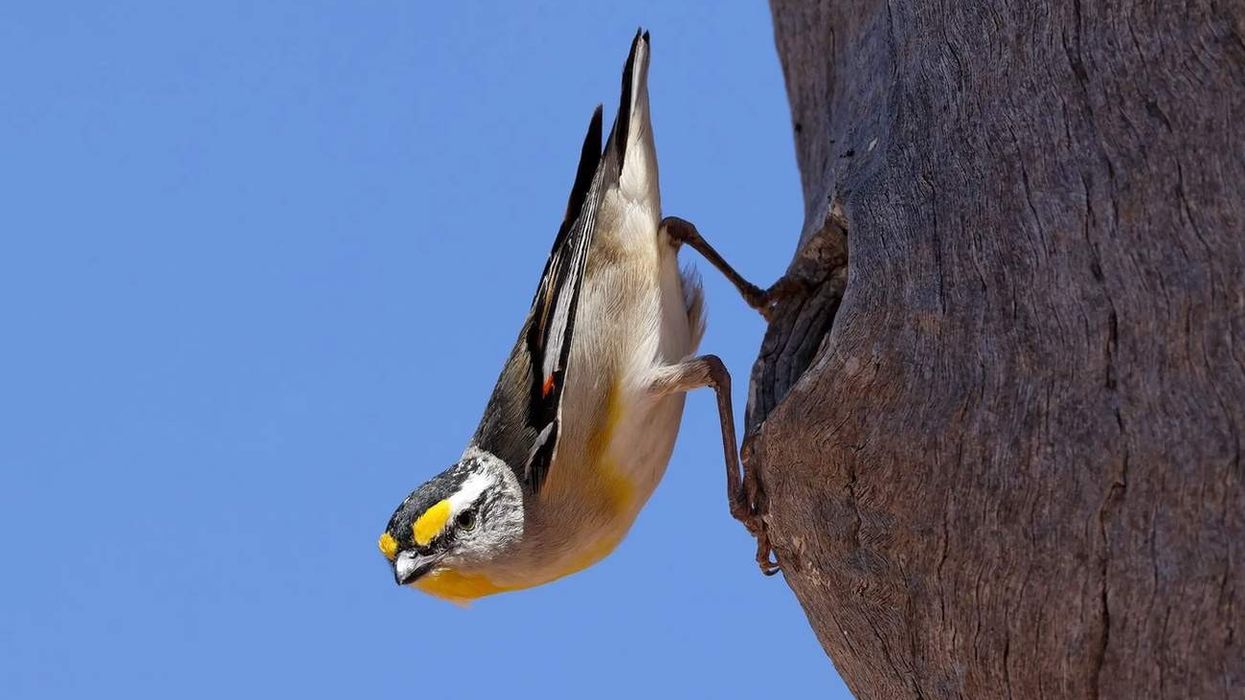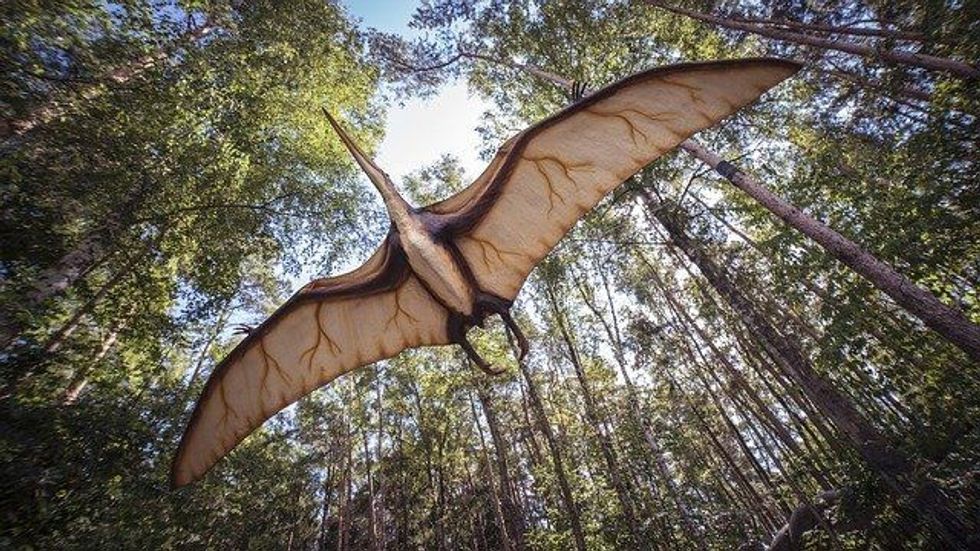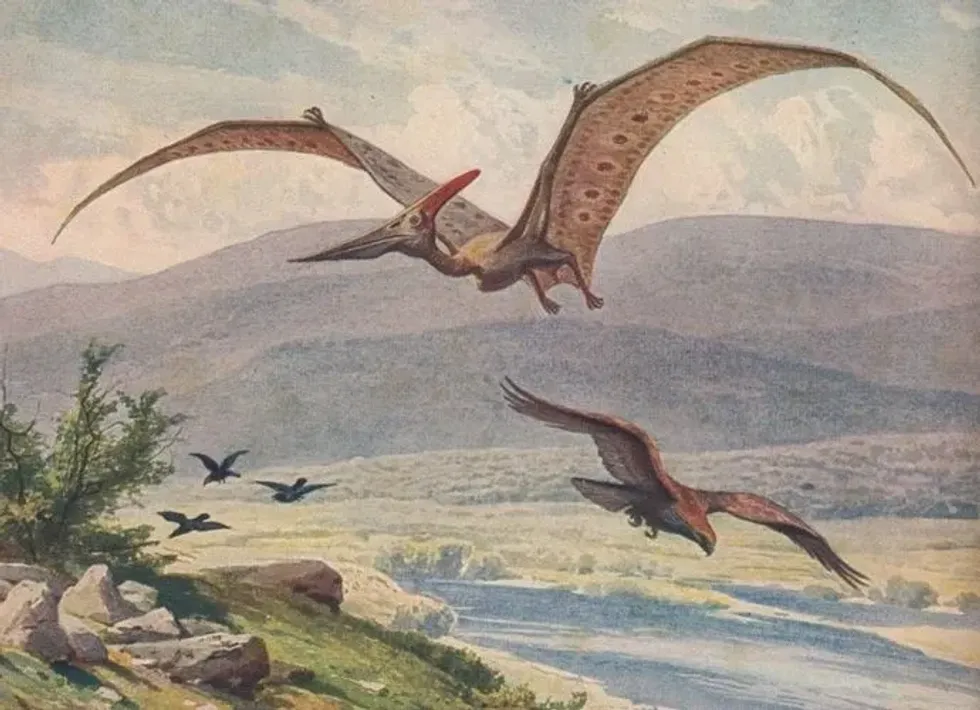When we talk about the beauty of nature, we certainly can't miss out nature's flying beauty, that is, the birds. The striated pardalote (Pardalotus striatus), is a native bird of Australia, known for its unique colorful body and a yellow spot at the front of the eyes, and also for the surprisingly loud voice.
They are often heard rather than being seen due to their small size.
There are four pardalote species namely, the yellow-spotted pardalotes, the eastern or red-tipped pardalotes, the black-headed pardalotes, and the striated pardalotes. The striated pardalote species belongs to the class of Aves, and the family of Pardalotidae.
They build their nests in tree hollows or dig tunnels in earth banks and migrate seasonally. Pardolates have a tiny body weighing 0.4 oz (12 g), a black crown head with some white stripes, and olive-gray backs.
The male and the female birds of this species are similar in plumage. Although this species is small-sized, they have an astonishingly booming voice that can be heard from a distinct range.
For more relatable content, check out these frigate bird facts and bowerbird facts for kids.
Striated Pardalote Interesting Facts
What type of animal is a striated pardalote?
The striated pardalote, Pardalotus striatus, is a bird, belonging to the class of Aves.
What class of animal does a striated pardalote belong to?
The striated pardalote belongs to the kingdom Animalia, phylum Chordata, class of Aves, family Pardalotidae, and genus Pardalotus.
How many striated pardalotes are there in the world?
There are mainly four species of Pardalotus striatus, the yellow-spotted pardalotes, the eastern or red-tipped pardalotes, the black-headed pardalotes, and the striated pardalotes. Though the forty-spotted pardalote birds are endangered due to the loss of natural habitat, the rest of the species are spread all over Australia in countless numbers.
Where does a striated pardalote live?
The pardalote birds are natives of Australia. There are spread everywhere in Australia mostly in the interior areas covered with trees, especially the eucalyptus forest, except, the western Australian arid areas. They are often seen along with the coastal areas also.
What is a striated pardalote's habitat?
The pardalote birds reside in the natural territorial habitat consisting of trees and shrubs. These birds are broadly spread over the woodlands, mostly in the eucalyptus forest, and also areas covering the rain forests and mangroves.
Who do striated pardalotes live with?
The Pardalotus striatus birds live in trees and woodlands with their co-species and many other different species of birds such as silvereye birds, parrots, robins, and also larger birds like miners who might chase them.
How long does a striated pardalote live?
The life span of pardalote birds is unknown, but considering some records we can conclude that it is capable of surviving for more than three yearswhereas the other species of pardalotes have an expected life span of more than six years.
How do they reproduce?
The breeding season of pardalote birds starts in June and ends in January. They are monogamous and mate for life.
The striated pardalote song changes during this period to attract partners. During the breeding season, the pardalotes form small groups of five to six birds and work on building nests in hollow trees or drill narrow tunnels in earth banks or sandbanks.
The female bird then lays four to six eggs in the nest. Both sexes take care of the eggs by sitting on them for 19 days until they hatch and also feed the newborn young birds.
What is their conservation status?
From recent researches, pardalotes currently have no risk of extinction. They are spread in many places in Australia. The rapid loss of their natural habitat is the only threat to their extinction in near future. Their basic threats to pardalotes are deforestation, land clearing, overgrazing, and forest fires.
Striated Pardalote Fun Facts
What do striated pardalotes look like?
The striated pardalote birds are luminously colored little birds. They have yellow-tipped beaks and bright yellow spots on their foreheads. They have considerable variation in plumage characteristics considering the geographical range of the pardalotes.
The pardalotes have white eyebrows, their backs are olive-gray and a white stripe on the wings. The stripe on the wing may be narrow or wide, depending on the various parts of the country.
The front tip of this wing stripe may be colored red or yellow. There may be narrow white stripes on the black crown on top of their heads. Their tail is like a short square wedge which is black in color with white tips.

How cute are they?
The little striated pardalote birds have a bright combination of colors in their body which makes them adorable. Birds with their soft plumage and elegant colors are always beautiful and cute. Moreover, the yellow patch on their forehead and the front tip of their wing stripe is colored red or yellow giving them a unique look.
How do they communicate?
The striated pardalotes often communicate with each other with a sharp and loud 'tchip tchip'. While feeding in small groups, these birds maintain contact through soft trills.
How big is a striated pardalote?
A striated pardalote bird is 3.3-4.7 in (8.5-12 cm) in length and 3.5 in (9 cm) tall. They have similar sizes when compared to the spotted pardalote and are twice smaller in size than the rainbow lorikeet.
How fast can a striated pardalote move?
The pardalote birds can move at an average speed. Although the exact speed is not yet measured.
How much does a striated pardalote weigh?
The striated pardalote birds are light-weighted birds with a maximum weight of 0.4 oz (12 g). Their light weighted body is due to their hollow bones and plumage which helps them to fly.
What are the male and female names of the species?
The striated pardalote bird's sex does not give it any specific name as the male and the female are similar in plumage, but the juvenile striated pardalote bird is much paler, especially on the crown and face region.
Both the male and the female striated pardalote birds, build the nest, nourishes, and takes care of the eggs before and after they hatch.
What would you call a baby striated pardalote?
Since the babies of striated pardalote birds cannot leave the nest and fly soon after they are hatched from their eggs, they are called nestlings. Once they grow up and are mature enough to hunt food and fly, they are no more considered nestlings.
What do they eat?
The striated pardalote diet includes scurrying on leaves, canopies in the eucalyptus forest, soft-bodied insects, or invertebrates like small common wasps, garden spiders, boll weevils, and termites. They also feed on lerps and larvae of insects.
While feeding, these birds occupy a place in small groups. The parents feed the young birds in their nests up till they learn to fly.
Are they dangerous?
No, the striated pardalote birds are not at all dangerous except for the insects or small invertebrates, and their larvae on tree-tops, leaves, or in scrubs. But, these birds have a threat from us humans and larger birds.
Would they make a good pet?
The striated pardalote can make a good pet as they have an amazingly loud chirp, but it is recommended not to pet these birds as they are best kept in their natural habitat.
Did you know...
The striated pardalote range map is only in Australia in the entire world and is certainly the most commonly found bird in the pardalote species.
During the breeding season, from June to January, the striated pardalote bird changes its tune and they sing a monotonous, repeating tune: 'sleep-may-be, sleep-may-be.'
The name pardalote means 'spotted' and derives from Greek.
Where do striated pardalotes nest?
The striated pardalote birds mostly nest in tree hollows, or holes in buildings, or at the end of a tunnel. They also build nests close to the ground, inside earth holes, near-earth banks, or sandbanks.
These birds use plant fibers, such as the bark of trees and grass, also lightweight artificial objects built by humans to build their nests. The birds protect their nests from predators by regularly visiting them.
What noise does a pardalote make?
The striated pardalote call is one of the most astonishing sounds heard in nature. They have a distinct song, a high musical three-note call sounding: 'weep-weep-weep'.
They use small chirps while feeding in small groups. These birds also change their tune during the breeding season. These birds may not often be seen on tree-tops, but the noises made by them are heard from afar.
Here at Kidadl, we have carefully created lots of interesting family-friendly animal facts for everyone to discover! Learn more about some other birds from our American kestrel interesting facts and common buzzard facts for kids pages.
You can even occupy yourself at home by coloring in one of our free printable striated pardalote bird coloring pages.








